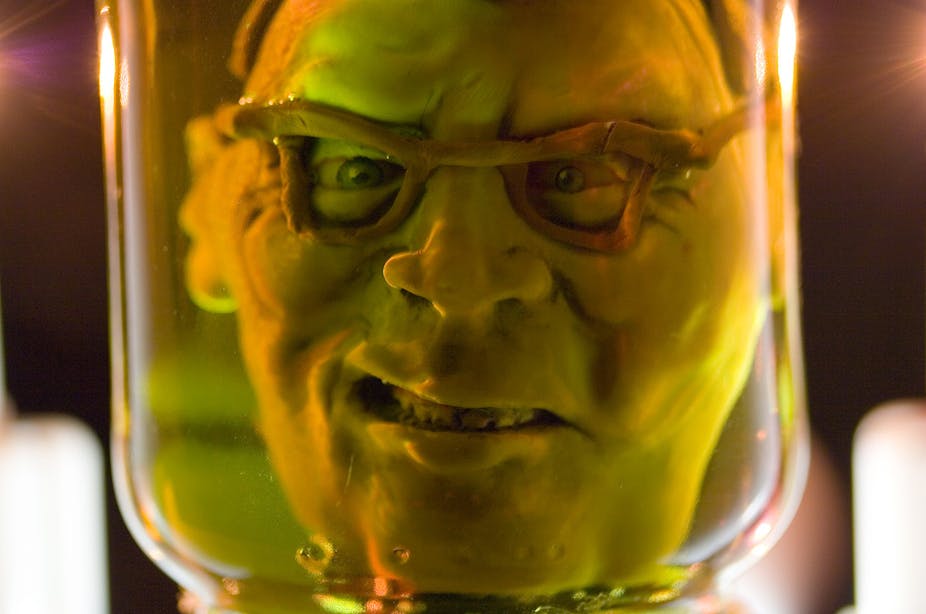“Mini brains” with separate working regions have been grown using stem cells in the lab for the first time. They have similarities to an embryo in the womb up to nine weeks.
Under the right conditions, scientists were able to grow the cerebral organoids, which formed different interdependent brain tissues from “intrinsic clues” given by the stem cells.
The brain tissue, which grows to a maximum of 3-4mm but is then limited by the amount of nutrients and oxygen that can reach cells, also developed working neurons, which process and transmit information via electrical and chemical signals through the brain.
How to grow a mini-brain
The technique involved taking fragments of generated tissue that were then embedded in droplets of a special gel that created a “scaffold” for more complex growth. A “spinning bioreactor” was then used to increase the absorption of nutrients. Brain regions were formed after about a month and reached maximum size at around two months. The tissue can also live for long periods - currently up to ten months.
The organoids were shown to have grown features similar to a developing brain, including a cerebral cortex, the outermost sheet of neural tissue that plays a key role in memory, perception and consciousness, and the dorsal cortex, which is a part of the brain involved in cognition and motor control. But although the brain regions are distinct, lead author Madeline Lancaster said, they didn’t form brain shapes that we’d recognise.
“By nine weeks an embryo brain has divided into brain regions which then go on to develop,” Lancaster said. “For example, the midbrain and hindbrain which eventually become spinal cord. The different regions in our brain tissue are not organised in the same way as a developing embryo, for example a cortex at the front. In the dorsal cerebral region, we have a stem cell population that you’d see in an embryonic stage at nine weeks.”
The research, which came out of the Institute of Molecular Biotechnology of the Austrian Academy of Sciences (IMBA) and was published in Nature, used human embryonic stem cells and induced pluripotent (iPS) stem cells to create the tissue.
Brain building blocks
The use of stem cells to grow human tissue is an expanding area of research. Embryonic stem cells are building block cells that can become specialised (differentiated) cells (that perform specific functions, for example liver cells) or repair damaged tissue - which forms the basis of research into regenerative medicine which the actor Christopher Reeve, who was paralysed in an accident, campaigned for. Induced pluripotent cells are cells that have been turned back into stem cells, as was recently done using skin cells.
Stem cells have already been used to grow functioning liver cells and even a rounded shape of retinal (eye) tissue in labs.
Other brain areas have also been grown in the lab but the Austrian researchers are the first to establish a 3D model of the developing brain. The group also tested that neurons were firing and were able to show synaptic connections.
Mini-brains as models
Research leader Dr Jürgen Knoblich said he was “pessimistic” about the technique being used to grow replacement parts - for example, getting a new part of the brain to improve your memory - because the brain was too complex. There would also be many technical obstacles to recreating the full circuitry and connectivity of the brain.
While growing brain tissue that would resemble anything like a mature brain is a long way off, the new mini-brains are already being used to help model microcephaly, a brain condition that causes brain shrinkage. Further experiments also revealed that a change in the direction in which the stem cells divide might be another factor in causing the disease.
The technique could also be used to model other conditions such as schizophrenia or autism and in treatments for neurodegenerative conditions such as Parkinson’s Disease using stem cells could be possible in the future.
Ian Wilmut, an early cloning pioneer and emeritus professor of regenerative medicine at Edinburgh University, said the research was another step towards finding potential treatments for inherited diseases.
“The brain is one of the most complex structures in the world,” he said. “It is made up of a great variety of different cells that form complex networks. We don’t understand how these networks keep us healthy and enable us to detect what is going on around us.”
“This research will provide new opportunities to study these arrangements as they function normally. It may also reveal some of the things that have gone wrong in a disease.”

